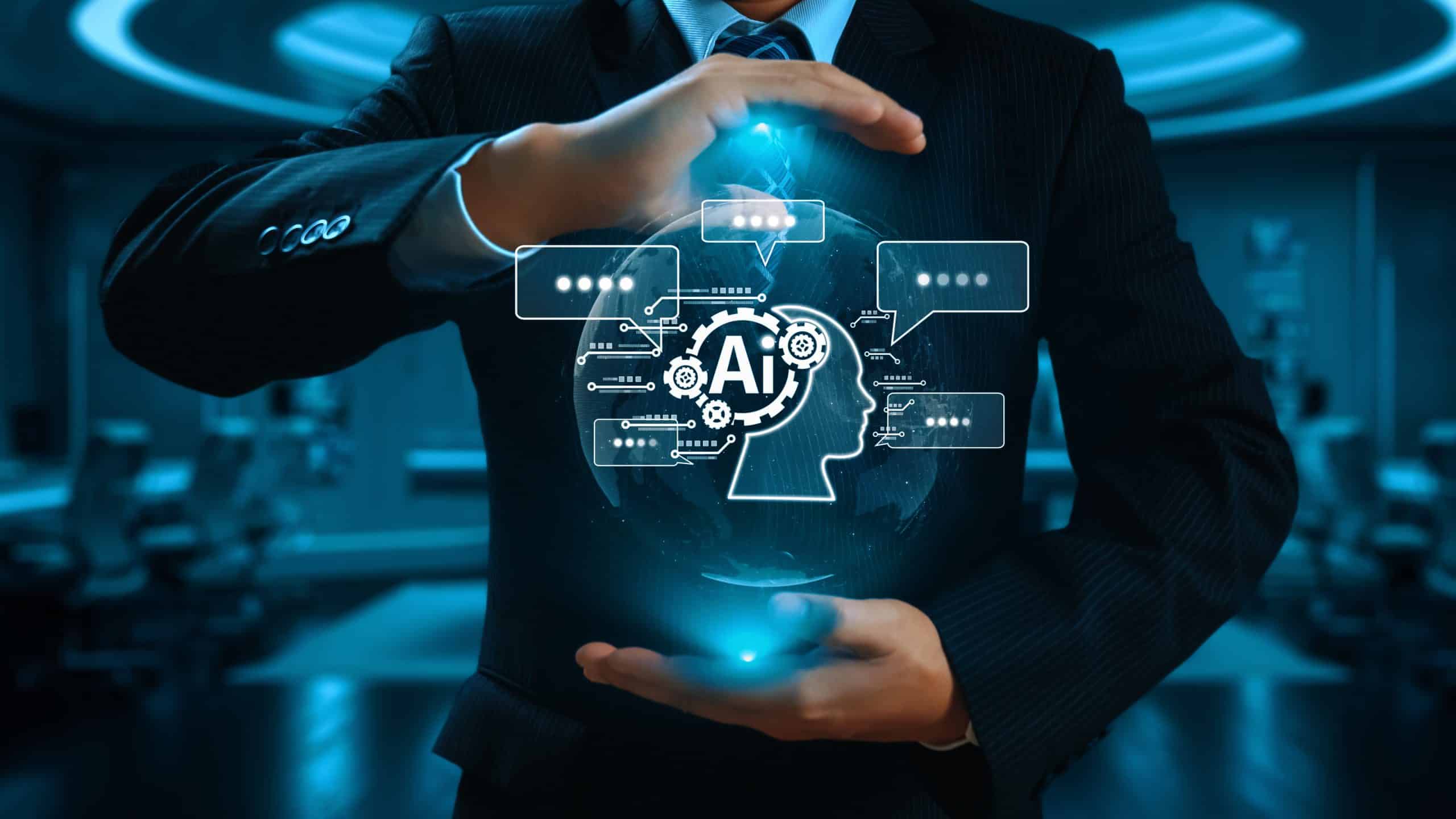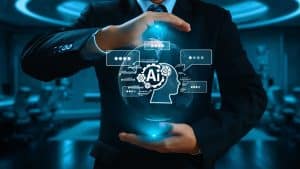Agentic AI systems 2025: what you need to know


Agentic AI systems are changing how the world operates.
As autonomous technologies capable of decision-making without human intervention, these advanced systems are enhancing operational workflows, redefining industry practices, and sparking global discussions on ethics and responsibility.
With Agentic AI systems 2025 on the rise, it’s time to explore how this technology is shaping our future—and what you need to know to stay ahead.
Deep Dive into Agentic AI Systems: How They Work and Why They Matter
Fully understanding agentic AI systems is essential in a world where machines are no longer just tools, but decision-makers.
These systems are designed not only to assist humans but to act independently within defined contexts. Their core strength lies in analyzing vast datasets, learning from patterns, and taking proactive steps without human input.
As they continue to evolve, understanding their architecture and potential becomes crucial for businesses, policymakers, and individuals alike.
What Defines Agentic AI Systems?
Agentic AI systems stand apart due to their autonomy, intelligence, and ability to improve with experience. They aren’t limited to executing tasks—they understand goals and make strategic decisions.
Core Capabilities:
- Autonomy: Operate without continuous human control, adjusting behavior as new data emerges.
- Strategic Decision-Making: Evaluate multiple scenarios, calculate outcomes, and make optimized choices.
- Learning Abilities: Use machine learning to refine actions and adapt to complex, dynamic environments.
For example, in healthcare, these systems can quickly assess lab results, leading to faster diagnoses and personalized treatment recommendations.
In finance, they can detect fraudulent transactions and assess market risks in real-time, improving security and investment decisions.
Real-World Impact and Ethical Complexities
The benefits of agentic AI are vast, but they come with significant ethical responsibilities. As these systems take on more critical roles, the implications of their decisions can affect lives, economies, and institutions.
Key Challenges Facing Agentic AI Systems
- Data Privacy and Consent
These systems thrive on data. Ensuring that data is used ethically and securely is essential to protecting individual rights.
- Legal and Regulatory Compliance
Autonomous decision-making requires updated frameworks. Current laws may lag behind the pace of innovation, making it difficult to ensure compliance.
- Algorithmic Bias
When trained on skewed data, agentic systems may unintentionally perpetuate discrimination. Regular audits and diverse datasets are necessary to mitigate this risk.
As the use of agentic AI systems grows, so does the need for transparency and human oversight. It’s vital that developers, users, and regulators collaborate to guide this technology toward equitable and responsible outcomes.
Understanding these dynamics isn’t just for tech experts—anyone interacting with modern systems will benefit from grasping how agentic AI operates.
It’s the foundation for preparing for a future where machines aren’t just assisting but actively shaping our decisions.
These intelligent agents are driving innovation in various industries, offering real-time insights and operational efficiencies.
Healthcare Applications
- Rapid Diagnostics: They analyze scans and lab results, reducing diagnostic errors.
- Treatment Personalization: Tailored patient plans based on individual data patterns.
- Workflow Automation: Scheduling and administrative tasks are streamlined.
Financial Services
- Fraud Detection: Identify suspicious transactions faster than human analysts.
- Portfolio Management: Real-time tracking and adjustment of investment strategies.
- Risk Assessment: More accurate forecasts of market behavior and loan performance.
Manufacturing & Logistics
- Predictive Maintenance: Sensors and AI predict equipment failures before they happen.
- Supply Chain Optimization: Adjust inventory and delivery routes dynamically.
- Labor Reduction: Automate routine tasks while reallocating human resources.
These advances offer clear proof that Agentic AI systems are already transforming how industries approach problem-solving and innovation.
Key Features of Agentic AI Systems: The Technology Behind Autonomous Intelligence

The key features of Agentic AI systems are what set them apart from other AI models. These systems are not limited to executing instructions—they sense, decide, act, and learn autonomously.
Whether applied in real-time decision-making or predictive analytics, these capabilities make them essential in modern industries.
Let’s break down the core traits that empower their performance.
Autonomy and Independent Operation
Agentic AI systems stand out due to their high level of autonomy. These systems don’t wait for commands; they act based on the data they continuously receive.
What does this autonomy look like in practice?
- Operational Independence: They monitor environments and respond without human oversight.
- Adaptability: When the context changes—like a shift in customer behavior—they instantly adjust.
- Efficiency Gains: They eliminate delays caused by manual decision-making.
This feature is vital for industries like logistics, finance, and emergency response, where fast reaction times can be critical.
Advanced Decision-Making in Complex Scenarios
Unlike rule-based systems, Agentic AI models evaluate uncertainty and competing factors to reach optimal conclusions.
This allows them to perform in environments where variables are constantly changing.
They don’t just compute—they strategize.
Core elements include:
- Data Analysis at Scale
- Predictive Modeling Using Live Inputs
- Real-Time Feedback Loops
With these tools, agentic AI can, for example, reallocate energy usage in smart grids during peak hours or redirect delivery routes based on weather disruptions.
Learning from Experience Through Machine Learning
Agentic AI systems don’t stop evolving once deployed. One of their most powerful features is their continuous learning capacity, which ensures long-term efficiency.
They refine their algorithms and adjust decision logic based on past performance. Over time, this results in:
Key advantages:
- Reduced Error Rates
- Improved Response Accuracy
- Faster Adaptation to Market Changes
This ability to self-improve makes agentic AI ideal for fast-paced industries like e-commerce and cybersecurity.
Seamless Communication and Integration
Unlike isolated systems, Agentic AI thrives in interconnected environments. It’s designed to communicate with other software, devices, and platforms—forming intelligent networks.
Why this matters:
- Ecosystem Awareness: It gathers data from multiple sources for richer insights.
- Cross-Functionality: Agentic AI can simultaneously optimize supply chain processes and customer service.
- Automation Chains: These systems can trigger tasks in ERP tools, chatbots, and IoT devices without manual input.
This makes them perfect for companies looking to digitally transform all stages of their operations.
Scalability That Matches Business Growth
One of the most practical strengths of Agentic AI systems is their ability to scale effortlessly. Whether an organization is running five workflows or five thousand, the same system can support both.
Scalability includes:
- Horizontal Expansion: Can be deployed across different departments or regions.
- Vertical Growth: Handles larger data volumes and decision trees as demand increases.
- Customizable Modules: Adaptable features allow for industry-specific implementations.
This ensures that AI grows alongside your business—without needing complete overhauls.
Why Understanding These Features Matters
Each of these key features contributes to what makes Agentic AI systems more than just tools—they’re partners in innovation.
By learning, adapting, and integrating into dynamic environments, they offer solutions that scale, respond, and evolve.
For forward-thinking organizations, understanding these capabilities means staying ahead in a future where AI doesn’t follow—it leads.
Generative vs Agentic AI: Shaping the Future of AI Collaboration
As artificial intelligence continues to expand its reach, two dominant paradigms are reshaping how we think about automation, productivity, and creativity: Generative AI and Agentic AI systems.
Though they often appear together in modern tech stacks, they serve very different purposes and offer complementary advantages.
Understanding Generative AI and Its Role
Generative AI is designed to produce content—text, images, audio, or code—based on patterns it has learned from vast datasets.
These systems don’t make decisions or initiate actions. Instead, they respond to prompts, making them powerful creative assistants but not independent actors.
Real-world Tools and Applications
Popular tools like ChatGPT, MidJourney, and DALL·E showcase the potential of generative AI. They’re capable of drafting essays, designing artwork, and creating melodies, all based on user input.
Practical Use Cases
- Marketing and Design: Automates content creation for campaigns, blogs, and visuals.
- Customer Service Messaging: Crafts replies based on typical queries for 24/7 support.
- Coding and Documentation: Assists developers by suggesting code or drafting reports.
Despite their usefulness, these systems are fundamentally reactive. They require human initiation and lack contextual awareness or planning capabilities.
Exploring the Agentic Advantage
In contrast, Agentic AI systems are proactive. These systems are not just assistants—they’re decision-makers and action-takers. They evaluate situations, set goals, adapt to environments, and perform tasks autonomously, often in real time.
Learning from Real Environments
Agentic AI evolves by observing results and adjusting behavior. It refines its decision-making through continuous feedback, unlike generative models that rely solely on past training data.
Goal-Oriented Intelligence
Rather than waiting for input, agentic AI identifies tasks to complete and plans how to achieve them. It can prioritize actions, allocate resources, and adapt its strategies mid-process.
Operational Integration
Agentic systems integrate into complex workflows—monitoring performance, optimizing logistics, or managing resources—without constant human oversight.
The Power of Synergy
The future of AI collaboration lies not in choosing one over the other, but in blending the strengths of both models. While Generative AI contributes creativity and content generation, Agentic AI applies intelligence and action, making strategic decisions and executing in real time.
Examples of Collaborative AI in Action
- Smart Assistants: Draft and send emails by analyzing tone and scheduling context.
- Autonomous Developers: Generate, test, and deploy code across platforms.
- Healthcare AIs: Write medical reports and trigger appropriate follow-up actions.
By combining these technologies, businesses can develop systems that are both imaginative and effective, accelerating workflows while maintaining human oversight, accountability, and ethical integrity.
Final Thought
The relationship between Generative AI and Agentic AI systems will define the next chapter of artificial intelligence.
When used together, they represent a new standard for autonomous, creative, and responsible AI deployment—paving the way for tools that think, create, and act with purpose.
Applications in various industries

The versatility of Agentic AI systems becomes most evident when we explore their real-world applications across different industries.
These intelligent systems are not just theoretical breakthroughs—they are actively transforming how businesses operate, make decisions, and respond to challenges.
From patient diagnostics to financial fraud detection and logistics optimization, Agentic AI is reshaping core processes and creating measurable impact.
Healthcare Innovations
In the healthcare sector, Agentic AI plays a pivotal role in supporting clinical decisions, improving patient outcomes, and streamlining operations.
Diagnostic Assistance
Agentic AI systems can analyze medical images, lab results, and patient history at incredible speed. By recognizing complex patterns that might be missed by humans, these systems assist doctors in identifying diseases early and accurately.
Personalized Treatment Plans
By evaluating a patient’s unique medical data, these systems can suggest customized treatment options, increasing the chances of successful recovery and reducing trial-and-error approaches in care delivery.
Operational Efficiency
Agentic AI automates administrative processes like scheduling, billing, and record management, freeing up time for healthcare professionals to focus on patient care rather than paperwork.
Finance and Risk Management
The financial industry thrives on precision, speed, and risk mitigation—areas where Agentic AI systems excel with data-driven insight and autonomous action.
Market Analysis and Investment Support
Agentic AI continuously monitors market indicators, economic news, and trading patterns to help financial institutions make strategic investment decisions.
Its predictive capabilities can identify opportunities ahead of human analysts.
Fraud Detection and Anomaly Monitoring
By scanning large volumes of transaction data in real time, these systems can detect suspicious behavior, flagging potentially fraudulent activity before major losses occur.
Their autonomy enables them to act without waiting for human approval.
Manufacturing and Logistics
In manufacturing and supply chain environments, where efficiency and uptime are critical, Agentic AI enhances productivity and decision-making through real-time automation.
Supply Chain Optimization
These systems forecast demand, monitor stock levels, and analyze vendor performance, allowing companies to minimize delays, reduce excess inventory, and ensure timely deliveries.
Predictive Maintenance
Agentic AI monitors equipment performance and environmental data to anticipate failures before they happen, significantly cutting down on costly downtime and repair expenses.
Inventory and Delivery Management
In logistics, these systems automatically adjust shipping routes, track inventory in real time, and help balance supply with customer demand, ensuring that operations remain resilient and agile.
By integrating Agentic AI systems into their operations, businesses across industries gain access to tools that not only support smarter decision-making but also adapt and scale as conditions evolve.
This ability to act independently, learn continuously, and integrate seamlessly into existing processes makes Agentic AI a cornerstone of the next generation of intelligent enterprise systems.
Challenges and Ethical Considerations
As Agentic AI systems become more integrated into our daily lives and decision-making processes, understanding the ethical and practical challenges surrounding their use becomes increasingly critical.
These systems offer great promise—but without careful oversight, they can also introduce new risks. Addressing these concerns is essential for building public trust and ensuring responsible, fair deployment.
Data Privacy Concerns
One of the most pressing issues in the implementation of agentic AI is the need for massive amounts of data. These systems rely on continuous input from user interactions, sensors, and external databases to make informed decisions.
This raises important questions about how personal and sensitive data is collected, stored, and used.
Informed Consent
Users must be clearly informed about the data being gathered, how it’s processed, and for what purposes. Consent should not be buried in complex terms of service—it should be explicit and transparent.
Data Security
Because these systems often handle sensitive medical, financial, or behavioral information, protecting against breaches is paramount. Failing to secure this data could result in reputational damage and legal consequences.
Transparency
Companies must outline how agentic AI systems use data to make decisions. By providing accessible explanations of AI processes and logic, organizations can build user trust and promote accountability.
Ensuring data privacy is no longer just a technical task—it’s a legal, ethical, and strategic priority for any organization adopting AI.
Bias and Fairness in Algorithmic Outcomes
Another key concern is algorithmic bias. Agentic AI systems learn from historical and real-time data, which may reflect societal inequalities or unbalanced viewpoints.
If not properly managed, this can lead to discriminatory outcomes in areas such as hiring, lending, policing, or healthcare.
Bias in Training Data
When training data is skewed—due to underrepresentation of certain demographics or biased historical practices—the AI inherits these patterns and may reinforce existing inequalities.
Fairness in Decision-Making
Organizations must implement practices that audit and test models regularly for fairness. This includes comparing outcomes across different user groups and adjusting algorithms accordingly.
Commitment to Diversity
Using diverse and inclusive datasets is not just good practice—it’s essential. Companies should also involve a diverse team of developers and reviewers to catch blind spots that might go unnoticed in homogeneous teams.
Accountability and Responsibility
As agentic AI systems become more autonomous, determining who is responsible for their decisions becomes more complex. When these systems operate without direct human instruction, questions arise: Who is to blame when something goes wrong?
Defining Legal Accountability
There needs to be a clear legal framework outlining the responsibilities of developers, vendors, and users. In cases of harm, like financial mismanagement or medical errors, liability should be traceable and enforceable.
Ethical Oversight in AI Design
Building ethics into the development process means thinking about long-term consequences, testing for unintended harms, and putting human well-being at the center of system goals.
Continuous Industry Dialogue
Creating responsible agentic AI systems is not a one-time action—it requires ongoing discussion between governments, tech companies, academic researchers, and the public to refine guidelines and expectations as technology evolves.
By recognizing and addressing these core challenges, we can help shape a future where Agentic AI systems deliver their full potential without compromising on privacy, equity, or accountability.
Ethical design and implementation are not optional—they are the foundation for trustworthy, human-centered AI.
Future Trends in Agentic AI Systems

As advancements in artificial intelligence continue to accelerate, the next generation of Agentic AI systems is expected to bring dramatic changes in how we work, live, and interact with technology.
These systems are evolving to become smarter, more autonomous, and deeply integrated into our daily environments. Below, we explore some of the most important trends shaping their future development.
Increased Autonomy
One of the most transformative trends is the ongoing rise in AI autonomy. Agentic systems are progressing toward full independence, making decisions with minimal or no human oversight.
As algorithms become more sophisticated and data availability increases, these systems will be able to operate in complex, unpredictable environments more effectively.
Key advancements in this area include:
- Self-learning Capabilities: These systems will continuously improve their performance by learning from new data, adjusting behaviors in real time, and refining models through feedback loops.
- Decision-Making in Complex Environments: Enhanced algorithms will enable Agentic AI to evaluate more intricate variables and act decisively in situations that demand nuanced reasoning.
- Integration with IoT: Collaboration with Internet of Things (IoT) devices will greatly expand system awareness, allowing agentic AI to interact with physical spaces and networks dynamically.
This leap in autonomy is expected to improve operational speed, cut costs, and enable new levels of scalability across industries such as manufacturing, logistics, healthcare, and defense.
Enhanced Human-AI Collaboration
Another key trend is the deepening of collaboration between humans and agentic AI systems.
Rather than replacing human labor, future systems will be designed to augment human strengths—enhancing creativity, decision-making, and execution.
Organizations are beginning to recognize that productivity doesn’t come from automation alone, but from synergy.
- Training programs will become more widespread, focusing on how workers can integrate AI into daily tasks.
- Workflows will be restructured to allow real-time cooperation between humans and AI agents.
- Interfaces will be optimized for intuitive interaction, empowering people to work side by side with intelligent systems.
This shift will lead to more adaptive workplaces, where humans guide strategy while AI handles execution and data-heavy analysis.
Ethical AI Development
As the capabilities of Agentic AI grow, so does the need for ethical oversight. Developers, institutions, and regulators are beginning to emphasize values like transparency, accountability, and fairness in AI design and deployment.
The future of AI is not just about power—it’s about responsibility.
To foster trust and ensure safe deployment, expect the following trends to emerge:
- Greater emphasis on fairness in AI decision-making, especially in high-stakes environments like finance, healthcare, and hiring.
- More transparent algorithms, including explainable AI models that allow users to understand how decisions are made.
- Stricter compliance standards to prevent misuse and to clarify liability in the event of errors or unintended consequences.
By prioritizing ethics, organizations can ensure that agentic AI systems contribute positively to society while avoiding the pitfalls of unchecked automation.
The path forward for Agentic AI systems is filled with potential. From increased autonomy and intelligent collaboration to ethical innovation, these trends signal a shift toward AI that is not only powerful but purpose-driven.
As industries embrace these developments, we can expect a future where AI not only works harder—but works smarter, safer, and more humanely.
A New Era Powered by Agentic AI Systems

Agentic AI systems are no longer speculative—they’re a cornerstone of modern innovation. While their potential is immense, their risks cannot be ignored.
Successful implementation depends on ethical design, human-AI collaboration, and clear accountability.
As explored in Forbes and YourStory, the journey toward widespread adoption is already underway. But to truly benefit from these advancements, we must tread wisely—balancing ambition with responsibility.
Stay informed, stay ethical, and harness the transformative power of Agentic AI systems for good.
FAQ – Frequently Asked Questions about Agentic AI Systems
What are agentic AI systems?
Agentic AI systems are intelligent systems capable of making decisions autonomously based on data and algorithms, improving operational efficiency.
How can agentic AI enhance business productivity?
By automating routine tasks and providing real-time data analysis, agentic AI systems allow employees to focus on higher-level strategic work.
What ethical considerations should be taken into account with AI?
It’s important to ensure that AI systems are developed with fairness, accountability, and transparency to avoid issues like bias and privacy violations.
How will agentic AI systems impact the workforce?
Agentic AI systems will create a collaborative environment where humans and AI work together, enhancing productivity and job satisfaction.
Liked the article?





